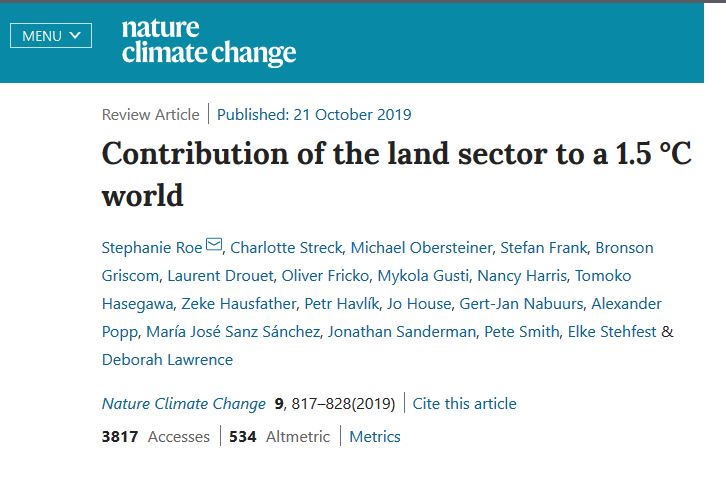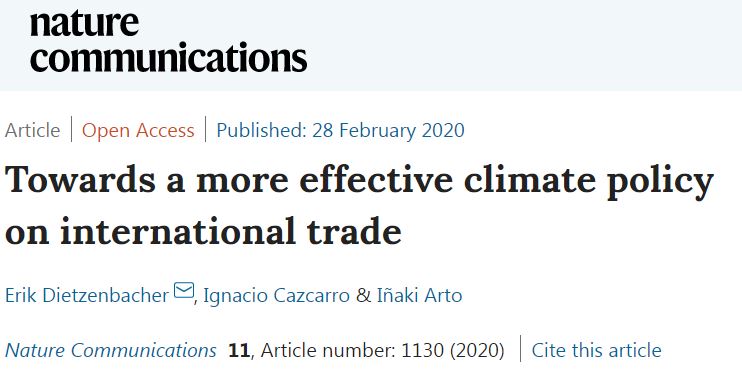22 urria, 2019
Published by BC3Research Maria Jose Sanz at 22 urria, 2019
The Paris Agreement introduced an ambitious goal of limiting warming to 1.5 °C above pre-industrial levels. Here we combine a review of modelled pathways and literature on mitigation strategies, and develop a land-sector roadmap of priority measures and regions that can help to achieve the 1.5 °C temperature goal. Transforming the land sector and deploying measures in agriculture, forestry, wetlands and bioenergy could feasibly and sustainably contribute about 30%, or 15 billion tonnes of carbon dioxide equivalent (GtCO2e) per year, of the global mitigation needed in 2050 to deliver on the 1.5 °C target, but it will require substantially more effort than the 2 °C target
11 azaroa, 2019
Published by BC3Research Ignacio Palomo Maria Jose Sanz Unai Pascual at 11 azaroa, 2019
The program on Reducing Emissions from Deforestation and Forest Degradation (REDD+) is one of the major attempts to tackle climate change mitigation in developing countries. REDD+ seeks to provide result-based incentives to promote emission reductions and increase carbon sinks in forest land while promoting other cobenefits, such as the conservation of biodiversity.
2 martxoa, 2020
Published by BC3Research Iñaki Arto at 2 martxoa, 2020
CO2 isurien erantzukizuna ekoizleen eta kontsumitzaileen artean esleitzea gai eztabaidagarria da klima aldaketaren politikan eta ikerketan. Bi kontabilitate metodo nagusi erabiltzen dira literaturan, herrialdeek emisio globalei egiten dieten ekarpena zehazteko. Ekoizpenean oinarritutako kontabilitateak (PBA) herrialde bateko industriek eta etxeek atmosferara askatutako CO2 kopurua neurtzen du. Kontsumoan oinarritutako kontabilitateak (CBA) herrialdearen amaierako produktuen kontsumoari egozten dizkio emisioak. PBA emisioak birbanatzen ditu CBAk, eta beste herrialde bateko emisioak jatorrizko herrialdearen kontsumorako beharrezkoak direla uste du. Bi kontabilitate-esparru horiek egungo CO2 isurien erantzukizuna esleitzeko erabiltzen dira. Ekoizpenaren ardura emisioak zuzenean sortzen dituzten herrialdeei zuzentzen zaie. Kontsumitzailearen erantzukizuna azken batean presioa bultzatzen duten herrialdeei zuzentzen zaie.
20 martxoa, 2020
Published by BC3Research Asun Rodríguez at 20 martxoa, 2020
A pesar del rápido crecimiento del uso de la restauración, esta no siempre genera una respuesta a corto plazo en los ecosistemas que garantice la recuperación de su estructura, funciones y servicios. Hasta ahora, la mayoría de los estudios que han evaluado la recuperación de ecosistemas utilizaban métricas que ignoran la complejidad necesaria para estructurar las comunidades de organismos que conforman los ecosistemas.




